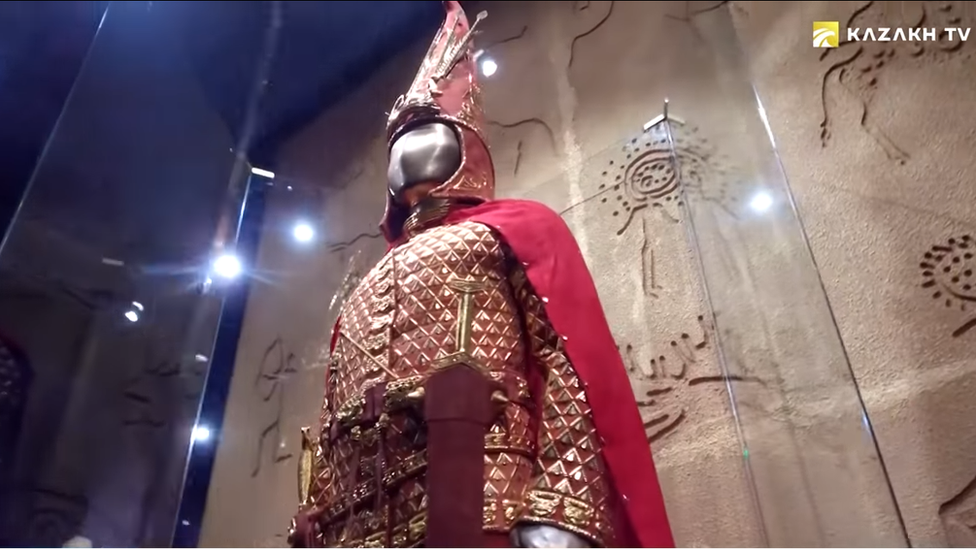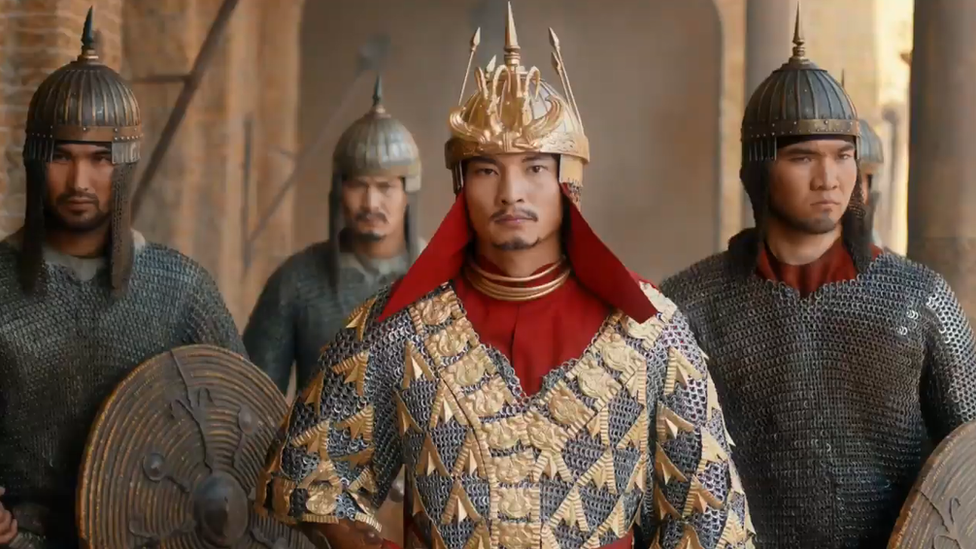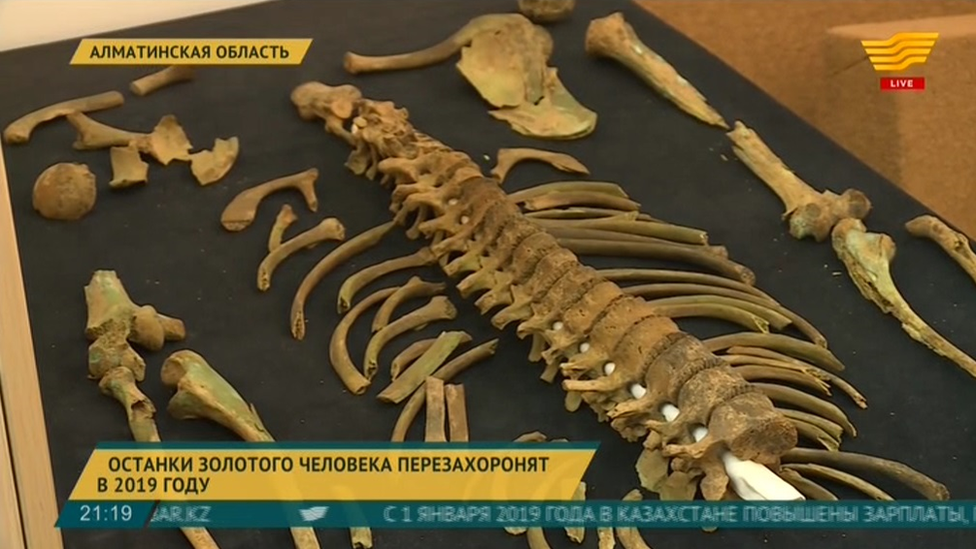Kazakh 'Golden Man' to be reburied
- Published

The 'Golden Man' is believed to have been a Scythian noble
Kazakhstan will rebury an iconic ancient warrior in a time capsule this year, in the hope that future generations will be able to establish who he really was, Kazakh TV, external reports.
Archaeologists uncovered the remains along with magnificent gold-embroidered armour and other precious funerary artefacts during a dig at the Issyk burial mound, external in the south of the country in 1969, and quickly dubbed him the "Golden Man".
Since independence in 1991, he has become a symbol of Kazakhstan's national heritage. His armour takes pride of place in the national museum in Astana, and tours the world as a calling card of Kazakh culture.

The Golden Man's bones had been stored in a photographic paper storage box
But little is known about the the man himself, as researchers were so stunned by the rich find of jewellery that they largely ignored the human remains.
'Rest in Peace'
The bones were only rediscovered recently at a forensic institute, stored in a cardboard box with a scribbled note reading "The Golden Man, May He Rest in Peace".
"We know his age and social status, while DNA tests could provide us with exhaustive data," researcher Dosym Zikiriya told Kazakh TV.
But Yermek Zhasybayev of the Issyk Museum held out little hope of this. "The bones are in a bad state. They have been kept in a cardboard box for 50 years and been exposed to all sorts of bacteria and viruses, including modern ones. It is now impossible to get a full DNA transcription - if only we had the skull, or just one tooth," he told the TV channel.

The legend of the Golden Man has become part of Kazakh national heritage
Scientists say their only hope is to seal the remains in a special time capsule to prevent any further decomposition, so that technological advances might allow future generations to glean more information about the long-dead warrior.
In recognition of the Golden Man's status, the capsule will be "ceremonially buried in keeping with ancient royal traditions", Kazakh TV said.
You may also be interested in:
Archaeologists are confident that the remains date back to at least the 2nd-3rd century BCE, when south-eastern Kazakhstan was home to the Saka people, who are believed to have been part of the broader Scythian nomadic confederation.
They were gradually displaced by the arrival of the Kipchak Turk ancestors of the Kazakhs, but modern Kazakhstan has taken the Golden Man to its heart.
He appears atop independence monuments throughout the country, including Astana and the financial capital Almaty, as well as on the presidential standard and commemorative coins.
'Golden Woman?'
The cult of the Golden Man even caught the eye of BBC programme makers, who filmed a 2018 documentary, presented by historian Bettany Hughes.
But the most intriguing mystery that future DNA testing might be able to solve is whether the Golden Man is in fact a Golden Woman, external.
Some archaeologists say this cannot be ruled out, given the rudimentary nature of the study of the remains, and the similarity of some of the Issyk artefacts to those found in female Scythian burial mounds, external in the southern Urals area of Russia.

The partial remains of the Golden Man will be reburied this year
Reporting by Halik Daniyarov and Martin Morgan
Next story: German row over Schindler's List tickets
Use #NewsfromElsewhere to stay up-to-date with our reports via Twitter, external.